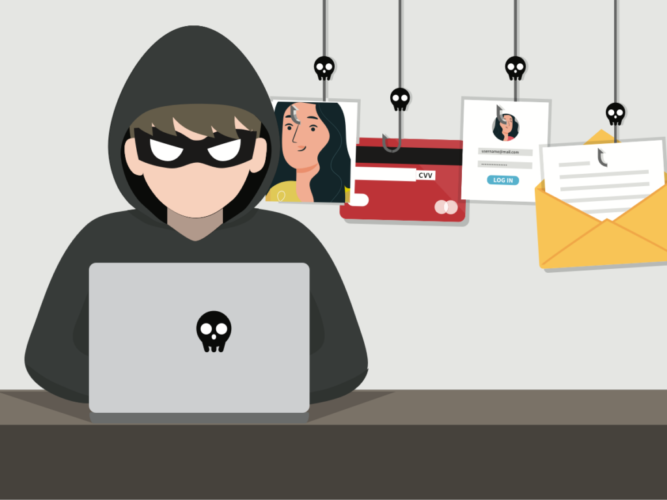[email protected] | January 14, 2023
Cybercrime is a constant threat to individuals and businesses around the world, and one of the most common tactics used by cybercriminals is phishing. This term refers to the practice of sending deceptive emails or text messages that impersonate a legitimate entity, with the goal of obtaining confidential information or money from victims.
Phishing is a sophisticated and deceptive tactic, and it can be difficult to detect. Often the emails or text messages appear to be from a trusted financial institution, an information technology company, or even a friend or family member. These messages may include links to fraudulent websites that appear to be legitimate, or may even request personal or financial information directly.
Phishing can also be used as a tactic to distribute malware. Emails or text messages may contain links that automatically download malware to a victim’s device, allowing cybercriminals to access sensitive information or control the device.
Phishing prevention is essential to protect both individuals and businesses from this cyber threat. One of the best ways to prevent phishing is through education and awareness. Individuals and businesses need to be aware of common phishing tactics, and learn to recognize fraudulent emails or text messages.
Another important measure is to keep systems and devices protected with up-to-date security software. Antivirus and firewall programs can help detect and block fraudulent emails, text messages, and malicious links.
In addition, companies must establish policies and procedures for information security management, including training their employees on how to recognize and avoid phishing. This may include building a security incident response team and implementing advanced security tools, such as security email and security solutions. two factor authentication.
Also, it’s important to be cautious when clicking on links or downloading files from unsolicited emails or text messages. If an email or text message seems suspicious or unexpected, it’s best to avoid clicking any links or downloading any attachments.
Another important security measure is not to provide personal or financial information through emails or text messages. Legitimate businesses and financial institutions will never ask for personal or financial information via email or text message. If you receive an email or text message asking for personal or financial information, it’s best not to provide it and instead contact the entity directly through a legitimate phone number or website.
Phishing can also be spread through social networks. Cyber criminals can create fake accounts or use existing accounts to send phishing messages via social media. It is important to be cautious when clicking on links or downloading files from social media posts and not to provide personal or financial information through these platforms.

There are several measures that can be taken to avoid falling for a phishing attempt:
- Be suspicious: If you receive an email or text message that seems suspicious or unexpected, it’s best to avoid clicking any links or downloading any attachments.
- Do not provide personal or financial information: Legitimate financial institutions and businesses will never ask for personal or financial information via email or text message. If you receive an email or text message asking for personal or financial information, it’s best not to provide it and instead contact the entity directly through a legitimate phone number or website.
- Use security software: Keep your systems and devices protected with up-to-date security software. Antivirus and firewall programs can help detect and block fraudulent emails, text messages, and malicious links.
- Be cautious with social networks: Phishing can also be spread through social networks. Please be cautious when clicking on links or downloading files from social media posts and do not provide personal or financial information through these platforms.
- Use advanced security tools: Use advanced security tools, such as secure email and two-factor authentication solutions, to protect your email account and other online services.
- Use a strong password: Use strong and unique passwords for each account. Do not use the same password for multiple accounts.
- Verify the URL: Make sure you are entering information on a legitimate website by verifying the URL before providing any personal information.
In short, phishing is an increasingly sophisticated social engineering technique, but there are measures that can be taken to prevent it. Education and awareness are essential, as is protecting systems and devices with up-to-date security software and implementing information security policies and procedures in companies. It is important to be cautious when clicking on links or downloading files from unsolicited emails or text messages, and never provide personal or financial information through these means.




